The Ultimate List Of 7 Inexpensive Alternatives To A Foam Roller (Updated 2023)
If you’re like most people, the thought of an expensive foam roller probably makes you want to reconsider ever trying them out.
Well, don’t worry
You don’t need to empty your bank account to benefit from using a self-massage tool.
Whether you’re looking for something with a little more bite or a gentler touch, there are plenty of viable alternatives that can help you get the same stretch and massage– without having to rely on your trusty foam roller.
From DIY foam rollers to lacrosse balls, here are 7 inexpensive alternatives that are easily accessible for all workout enthusiasts – whether it be someone in perfect health or those dealing with some physical injuries.
So, if you’ve been wanting to loosen up tense muscles after a hard day at work or power through a pesky injury – then read on as these alternative finds might give you just the release (and grin) that comes with finding new solutions!
This post contains affiliate links. As an Amazon Associate, I earn from qualifying purchases. This means I may earn a commission, at no extra cost to you, should you choose to make a purchase using my link.
How to Make DIY Foam Rollers at Home
Making a foam roller can be a great option and it only takes a few minutes to whip one up.
You will need a few supplies which you may even have lying around your house or garage.
Swim Noodle DIY Foam Roller
Items I Used:
- Swim noodle
- Old round curtain rod – (You could also use a 1 inch in diameter PVC pipe)
Take a standard swim noodle with a hole down the center. Cut the noodle to any length that you prefer, some prefer a smaller foam roller while others prefer a longer size.
You can even get thicker noodles if you prefer. The options are endless!
I personally have not tried the thicker rollers but I would assume they would be better if you are looking for a softer roller.
Then get a PVC pipe or round metal object that will fit into the swim noodle – I used an old metal curtain rod for mine.
I suggest that you make the pipe or metal slightly smaller than the swim noodle.
Push the PVC pipe or metal into the hole of the swim noodle.
That’s it! You now have a strong and solid foam roller.
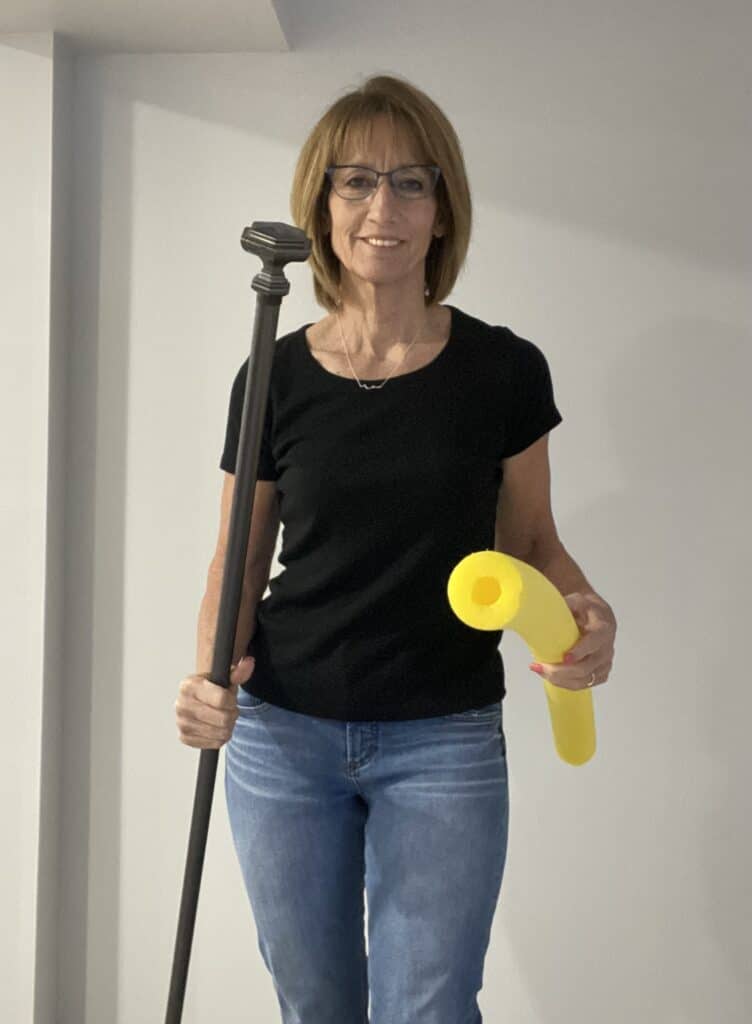
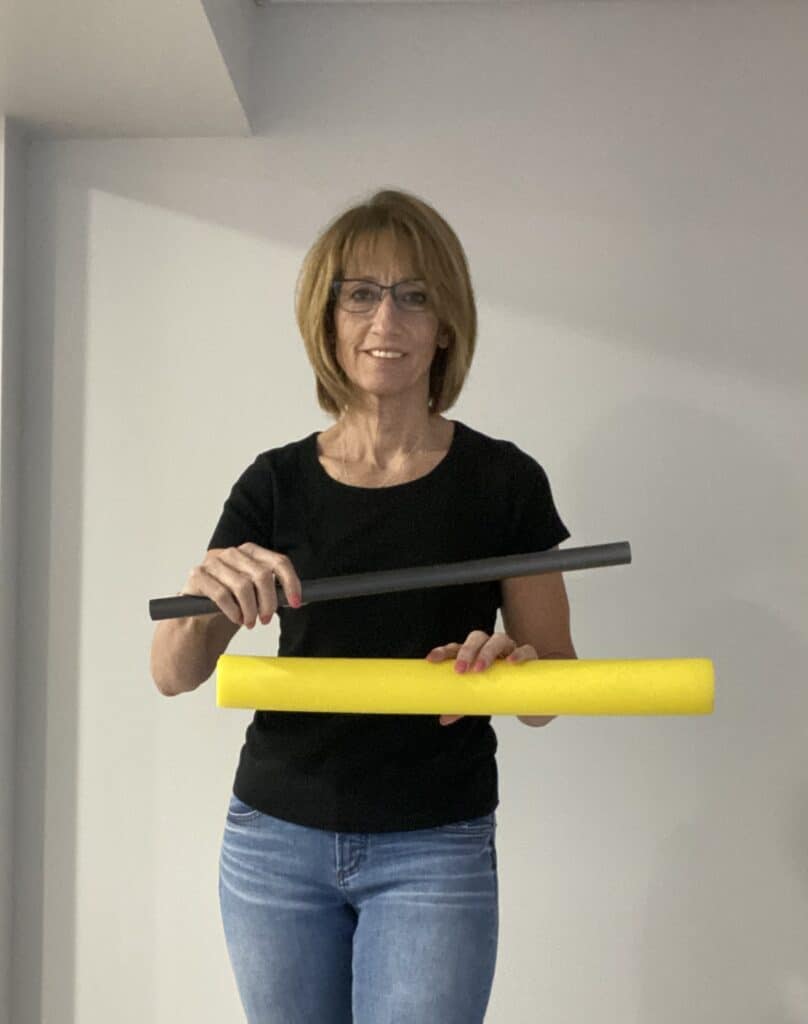
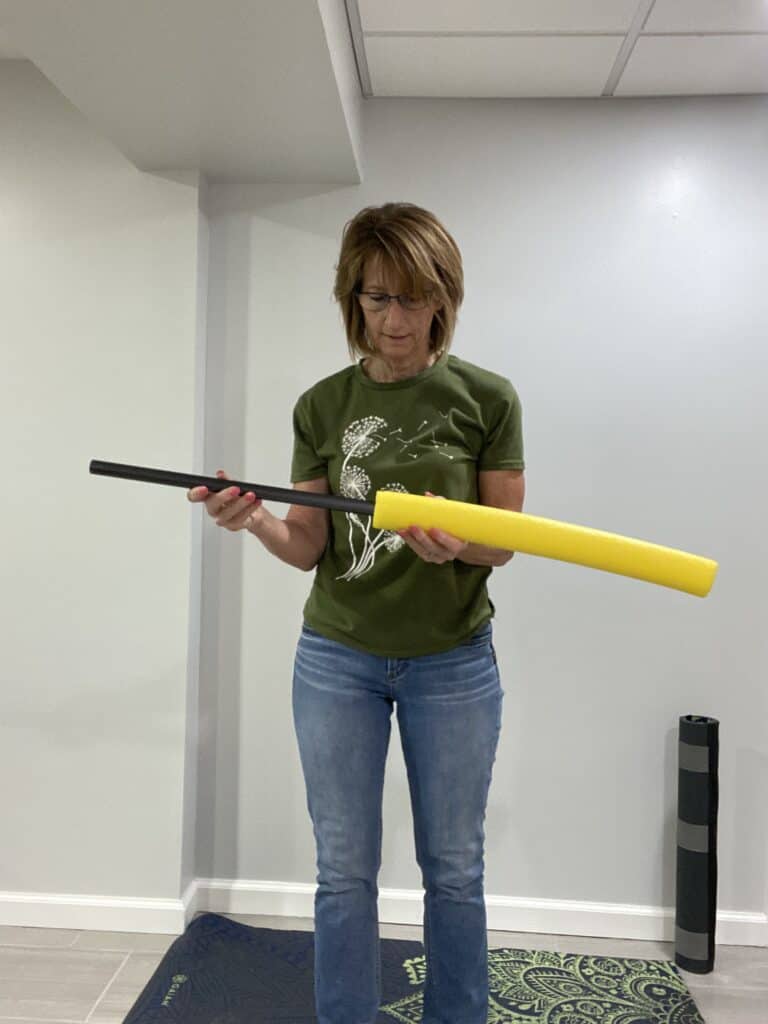
PVC Pipe DIY Foam Roller
A PVC pipe massager is an inexpensive and effective way to get the same relief from a foam roller without the added bulk of one.
The advantage of this PVC pipe massager is that it can target deep tissue areas and provides an even amount of pressure. It’s great for decreasing muscle soreness after a workout and helps to increase flexibility by improving circulation in the targeted areas.
This makes it a great choice for a DIY massage tool whether you’re at home or on-the-go.
Items I used:
- PVC pipe – whatever diameter that you prefer
- Old yoga mat or woven material or cloth (whatever you want to use to cover the PVC pipe).
- Duct Tape
How To Make Your Foam Roller
- Start by cutting a PVC pipe so that it is the same length as the width of your yoga mat.
- Then cut the yoga mat so that it can wrap around the PVC pipe once or twice.
- Take the yoga mat and wrap the PVC pipe tightly.
- Apply duct tape around the ends and middle of the foam roller and another piece down the length of the yoga mat at the seam.
- Make sure that the duct tape is longer than the PVC pipe so that you can tuck the ends into the PVC pipe to secure the tape.
Wala! You are ready to roll.
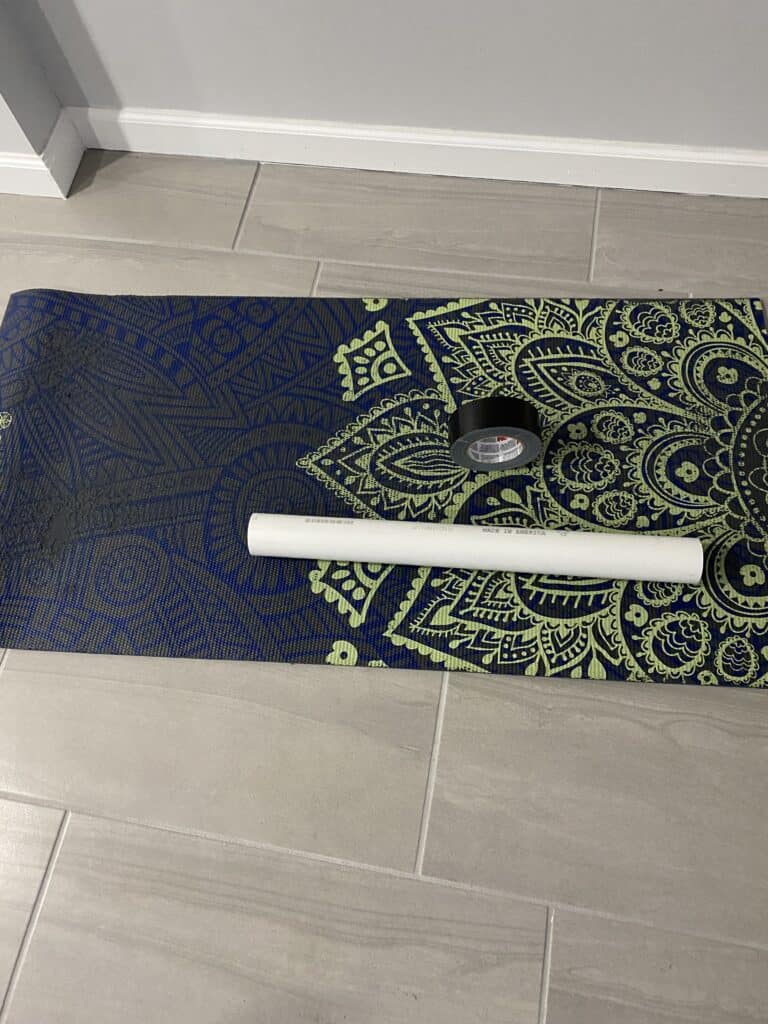
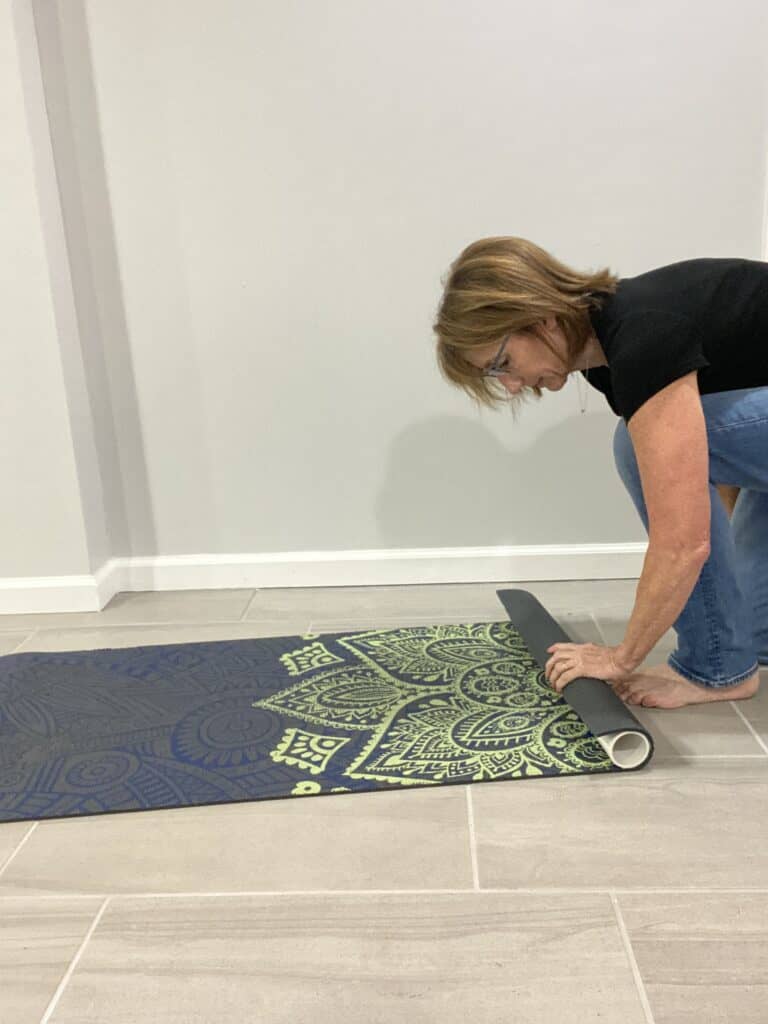
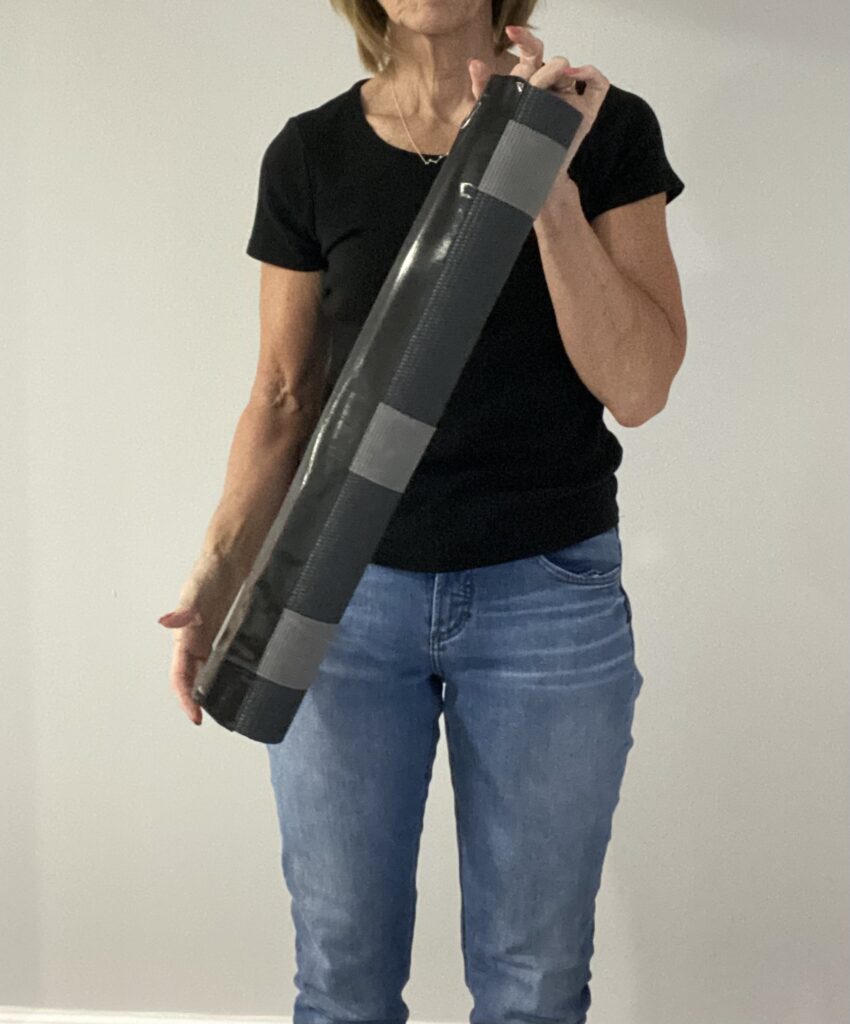
Household Items and Sports Equipment Instead of a Foam Roller
I’m always amazed at how many items I have around the house that I can – and do use in place of my foam roller.
Sometimes it’s because I am to lazy to go upstairs and grab my foam roller and sometimes I just need something a little smaller to get into a trigger point area that my foam roller just can’t reach!
These items range from house hold items to the grandkids sporting equipment!
Here are a few things that I have found to work wonders with relieving tension.
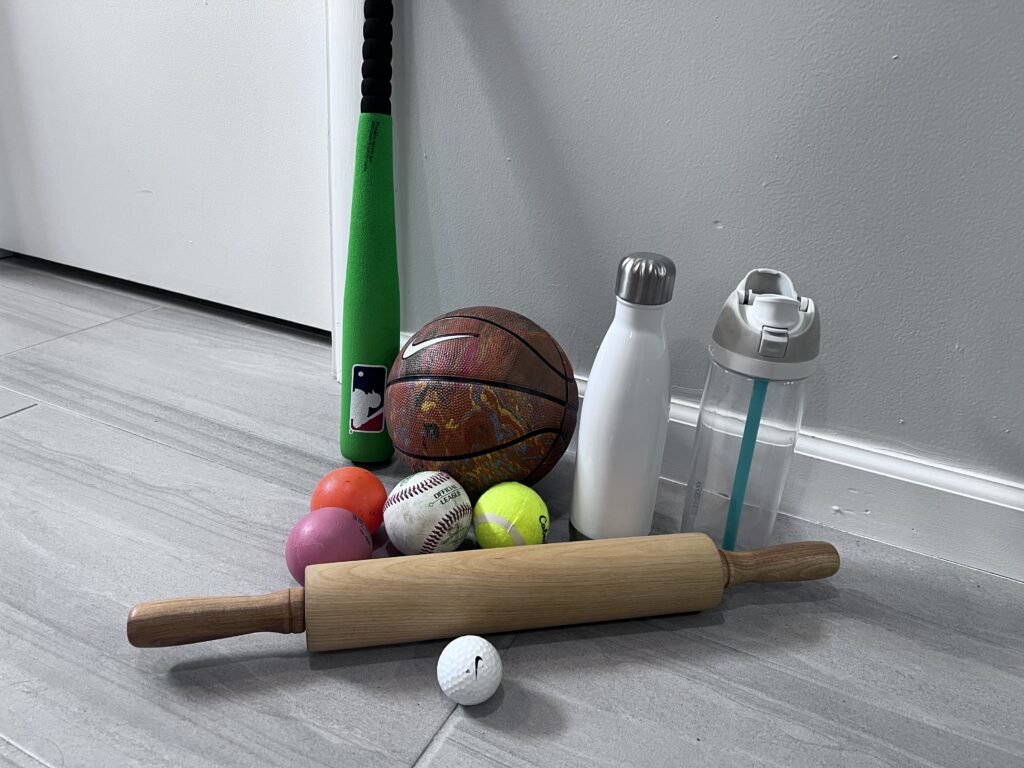
The Rolling Pin and T-Ball Bat
Almost everyone has a rolling pin in the cabinet.
If you’re anything like me, baking is not on the top of your fun list – so why not use your rolling pin as a foam roller instead!
I have also used my grandson’s t-ball bat! I actually liked it better than the rolling pin since it had a softer covering on it.
You could also wrap the rolling pin with a yoga mat or fluffy towel to get the same effect as the bat.
Just place the rolling pin or t-ball bat on the floor under your sore muscles and roll back and forth.
Just be sure not to apply too much pressure since there is no give in a rolling pin.
A Water Bottle
Who needs a foam roller when your gym water bottle can do the trick?
Not only will it alleviate muscle pain and boost blood flow, but it’ll also give you a refreshing sip of water.
Just make sure to opt for a durable metal bottle over flimsy plastic, although some plastic bottles can step up to the plate.
And if you prefer a softer touch, wrap the bottle with a piece of clothing or towel.
Or, fill it up with some water and pop it in the freezer for an icy cold muscle-treating experience. It’s perfect for targeting your foot arches and shoulders.
Don’t let soreness ruin your gym grind – roll with your trusty water bottle.
Lacrosse Ball
Who needs a foam roller when you have a lacrosse ball? I love mine!
These little guys are the ultimate pressure point slayers. Their firmness and compact size make them the perfect tool for targeting those deep-seated aches and pains.
For best results, focus on muscle groups with specific trigger points, like your glutes back of shoulder.
Once you’ve found the tight spot, hold the ball in place and apply pressure as needed.
You can use small circles or slow pulses to really work the area and get that deep tissue massage you crave.
Take your time and enjoy the feeling of release as you spend 10-30 seconds on each trouble spot.
With the lacrosse ball, you’ll be rolling your way to sweet, sweet relief in no time.
Tennis Ball or Golf Ball
Who says sports can’t be relaxing?
Grab a tennis or golf ball and massage those tight tissues with ease. And not just any tissues, we’re talking deep knots in your muscles.
Say goodbye to lactic acid buildup and hello to increased blood flow. Plus, these balls are perfect for targeting trouble spots like your feet, neck, and shoulders. No floor? No problem!
Toss that ball in a sock and use it against the wall.
Ready to release that knot on your shoulder?
To tackle a shoulder knot, pop the ball in the crook of your neck and roll it down your shoulder for about a minute.
When you hit a tough spot, stick with it until the tension melts away.
Your muscles will thank you for the workout.
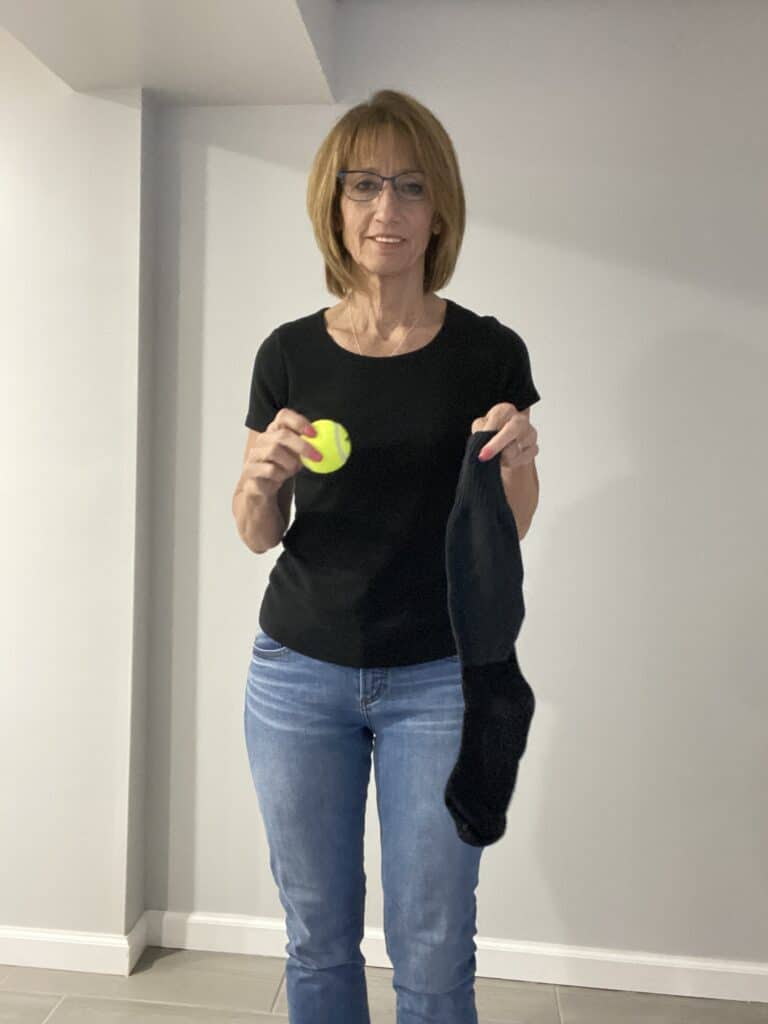
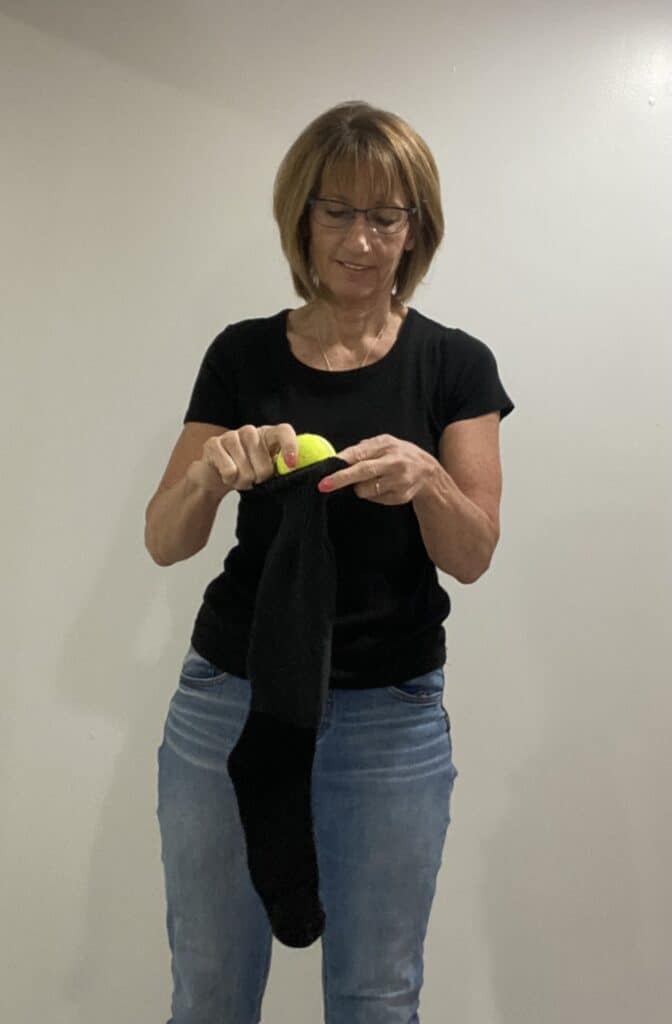
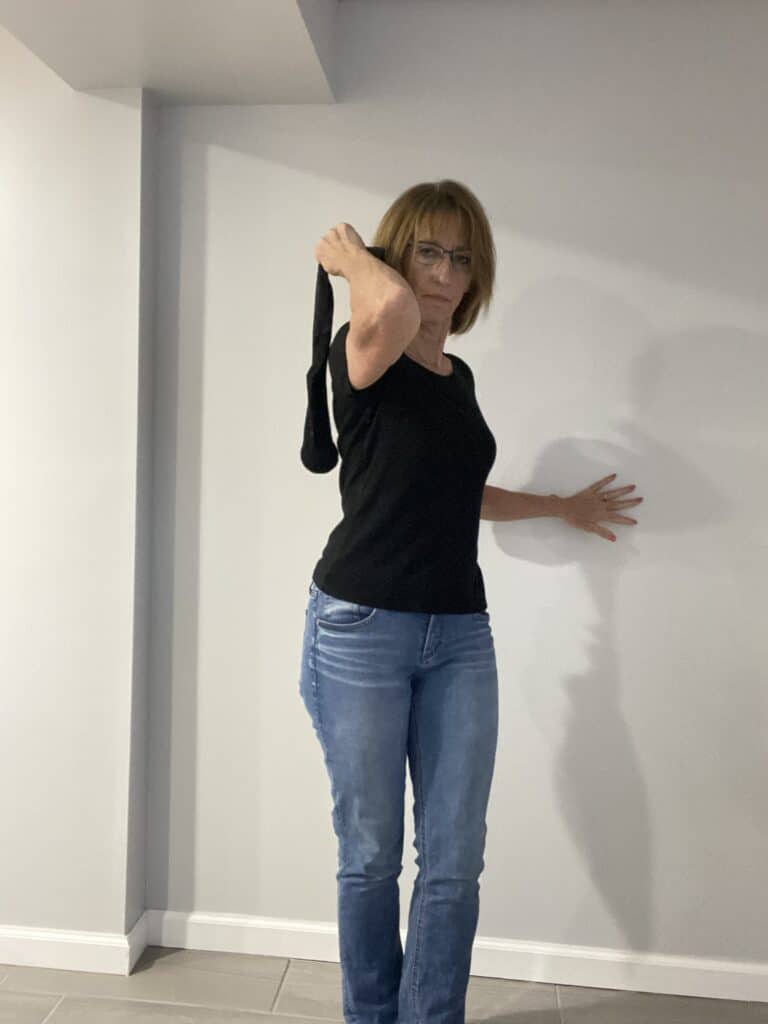
Small Youth Basketball
Foam rollers are out, youth basketballs are in!
I found that using the youth basketball was a great option.
If you want a more focused muscle release, these little rubber balls are the answer for your tight muscles.
Say goodbye to endless rolling and hello to targeted relief.
They’re like personal masseuses for your knots and tension.
Plus, they’re smaller than a foam roller, so you can get right into those hard-to-reach spots like your neck and shoulders. And the best part? You don’t need to be an NBA or WNBA player to get the benefits.
Just roll those balls onto your sore spots for serious and instant relief.
Trust us, your muscles will thank you for making the switch.
In Conclusion
Get ready to roll out the red carpet for foam rolling!
Not only does it release pain and improve blood flow, but it also turns you into a flexible, moving machine. And let’s not forget about the star of the show: fascia! If left unchecked, this all-encompassing tissue can go rogue.
That’s where foam rolling comes in – it’s the hero that keeps fascia healthy and in check by circulating fresh, oxygenated blood through your body.
Don’t have a foam roller? No sweat! Just look around your house for potential substitutes because, ladies and gentlemen, we’re keeping those muscles movin’ and groovin’!
